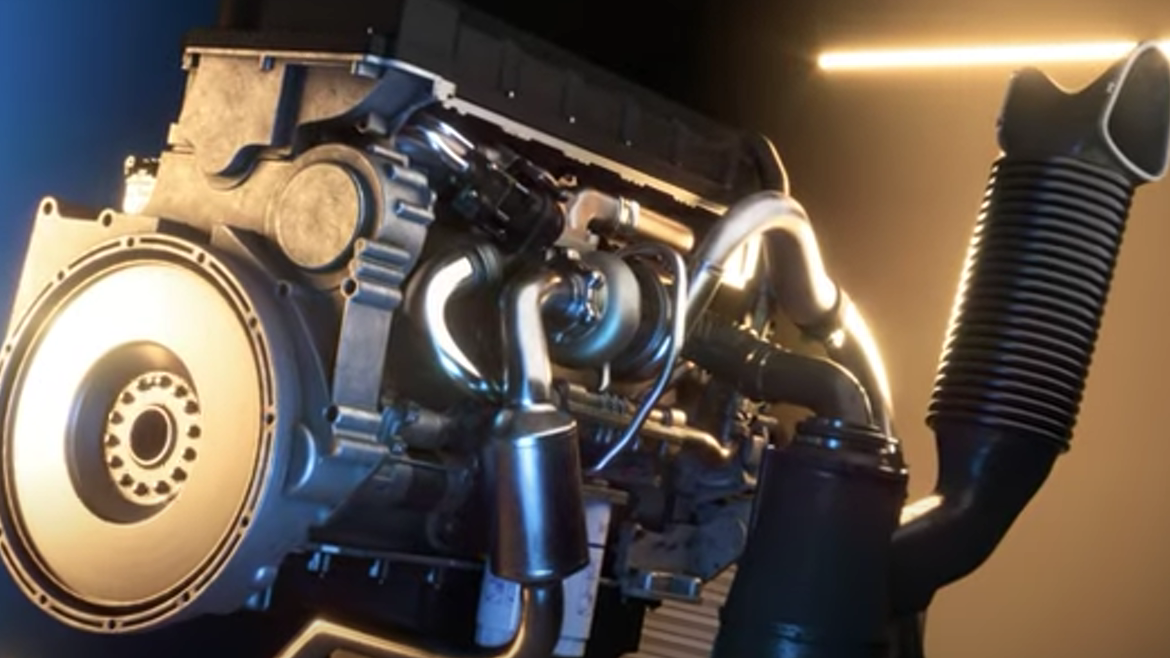Download a pdf copy of this article
Courtesy of Engine Technology International
AS THE DRIVE TO REDUCE GHGs AND INCREASE FUEL EFFICIENCY CONTINUES TO ACCELERATE, LOWER ‘HIGH TEMPERATURE HIGH SHEAR’ VISCOSITY ENGINE OIL IS PLAYING AN EVER-IMPORTANT ROLE.
Reduced emissions and increased fuel economy continues to force changes in engine hardware design across the world. Changes in heavy-duty diesel engine technology and operating conditions have resulted in engine downsizing, downspeeding, higher oil temperatures and start/stop technology to name a few. At the same time, advances in heavy-duty diesel engine oils have played a vital role in enabling these improvements.
It is generally accepted that utilizing lower viscosity grades – moving from SAE 15W-40 to 10W-30 and 5W-30 viscosity grades – delivers increased fuel economy and reduced GHG. Meanwhile, it has been proved through stringent testing that hardware protection is not sacrificed.
A typical method of measuring the viscosity of an engine lubricant is kinematic viscosity (KV) – the time taken for a fixed volume of oil to flow through a tube under the force of gravity. However, in an operating engine, oil is exposed to more than just gravity, notably where it has to run in hotter and more severe operating conditions. The lubricant is required to lubricate and protect areas such as the bearings and the camshaft, as well as the piston rings and liners, under high shear conditions at high operating temperatures.
High-temperature, high-shear (HTHS) dynamic viscosity is the current industry standard that best predicts fluid behavior in these more representative operating conditions. HTHS measures the temporary viscosity loss of an engine oil under high shear at elevated temperatures. The number measures the resistance to flow of the oil, simulating the narrow tolerances and high speeds between moving parts in a
hot engine. As the HTHS viscosity reduces, the predicted fuel efficiency increases. It is imperative to ensure that oils do not shear down at high temperatures and shear rates, ensuring the film strength remains acceptable for component longevity at all times during the oil drain interval.
Traditionally heavy-duty diesel engine oils have had minimum HTHS viscosity rates of 3.5 mPa·s – also commonly referred to as centipoise (cP). Lower HTHS viscosity is actively being pursued by an increasing number of heavy-duty OEMs, enabling efficiency improvements in engine technology as well as directly delivering the fuel-efficiency benefits that properly formulated lower viscosity oils can provide. This focus covers both factory fill applications for new and future engine designs and considers the use of low HTHS viscosity oils in specified engines dating back several years.
Industry specifications are also being rolled out to reflect the needs of engine manufacturers. The American Petroleum Institute (API) saw first licensing of its first split category of API CK-4 and API FA-4 in December 2016, with new API FA-4 oils offering fuel efficiency benefits through lower HTHS viscosities between 3.2 cP and 2.9 cP. The European Automobile Manufacturers’ Association (ACEA) is likely to follow with a new sequence at similar HTHS viscosity rates in the next upgrade following the recently updated ACEA 2016 Oil Sequences.
Keith Corkwell, global business manager for Lubrizol’s heavy-duty diesel engine additives segment, comments, “The move to low HTHS heavy-duty engine oils presents opportunities and challenges. In order to assure continued durability and protection under reduced high-temperature, high-shear environments, new additive technology is essential to enable the move to low HTHS engine lubricants. When moving to low HTHS viscosity solutions, the additive and performance polymer have a more significant role to play in the overall finished oil formulation.
“Lubrizol has many years of proven experience in developing and commercializing low HTHS technology. In heavy-duty diesel engines, this includes the North American introduction of the new low HTHS category API FA-4. With over 80,000,000 km of real world driving (and still counting), Lubrizol has developed the knowledge and know-how in moving to low HTHS solutions and is ready to engage with its partners to exploit the full benefits and opportunities low HTHS heavy-duty diesel lubricants have to offer, both today and in the years to come.”
For more information on heavy duty engine oils, contact your Lubrizol representative.









